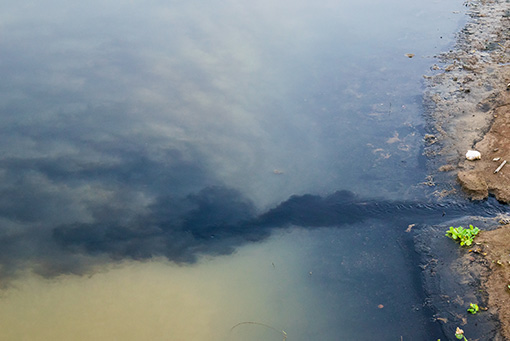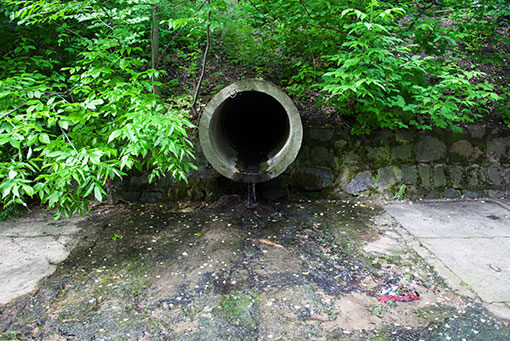Illicit or Illegal Connections to the Storm Sewer System

Illicit Connections are defined as “illegal and/or improper connections to storm drainage systems and receiving waters” (CWP, 1998). A discharge of industrial wastewater to a storm sewer is “illicit” because it would ordinarily require a permit under the Clean Water Act. Many building owners or operators are not aware that improper connections exist in their facilities. Identifying and removing illicit connections is a measure for reducing storm water pollution. In extreme cases of illicit dumping, legal action is necessary.
The City of Cumming has implemented an Illicit Discharge Detection and Elimination (IDDE) Program. The procedures for detecting illegal connections to the Storm Sewer System are:
- Survey individual buildings to discover where connections to storm drains exist
- Inspect sewer lines with television equipment to visually identify all physical connections.
- Compare the results of the field tests and the video inspection with the known connections on the map. Suspicious areas should be further investigated.
- Institute mandatory inspections for new developments or remodeling to identify illicit connections to the storm sewer system.
- Remove and test sediment from the catch basins or equivalent structures.
- Inspect connections in question to determine whether they should be connected to the storm drain system or to the sanitary sewer. Use methods of identification such as dye testing, visual inspection, smoke testing, or flow monitoring, as described below.
- Dye Testing. Flushing fluorometric dye into suspicious downspouts can be useful to identify illicit connections. Once the dye has been introduced into the storm system via the connection in question, the water in the collection system is monitored to determine whether an illicit connection is present.
- Visual Inspection. Remotely guiding television cameras through sewer lines is another way to identify physical connections.
- Smoke Testing. Smoke testing is another method used to discover illicit connections. Zinc chloride smoke is injected into the sewer line and emerges via vents on connected buildings or through cracks or leaks in the sewer line. Monitoring and recording where the smoke emerges, crews can identify all connections, legal and illegal, to the sewer system.

- Smoke Testing Continued Mechanisms on drains should prevent the smoke from entering buildings; however, in some instances, this will occur. It is important to notify the public that the smoke is non-toxic, though it should be avoided as it can cause irritation of the nose and throat for some people.
- Flow Monitoring. Monitoring increases in storm sewer flows during dry periods can also lead investigators to sources of infiltration due to improper connections.
- Infrared, Aerial, and Thermal Photography. Researchers are experimenting with the use of aerial, infrared, and thermal photography to locate dischargers by studying the temperature of the stream water in areas where algae might be concentrated and in soils. It also examines land surface moisture and vegetative growth. This technique assumes that a failing OSDS, for example, would have more moisture in the surface soil, the area would be warmer, and the vegetation would grow faster than in the surrounding area (Johnson and Tuomari, no date).
If you suspect that a home, business, or industry is illegally connected to the Storm Sewer System, please contact the City of Cumming Cumming Utilities at (770) 781-2020.
